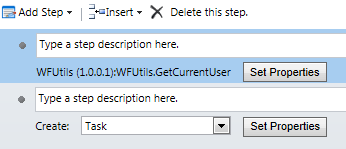These days I got the chance to read Microsoft
Dynamics CRM 2011 Cookbook, a book written by Dipankar Bhattacharya.
The book has 10 chapters and is structured as a list of
recipes, covering different arguments about Dynamics CRM.
Chapter 1: Installing Dynamics CRM 2011
This is the largest chapter, it not only covers
the installation of Dynamics CRM Server but also other components such as
Reporting Extensions, E-mail Router, Outlook Client. Step by step instructions
and appropriate screenshots.
Chapter 2: Maintaining and Optimizing Microsoft Dynamics CRM 2011 Server
A basic knowledge of SQL Server is required for this
chapter, especially for the Backup & Recovering part, useful the sections
explaining how to enable tracing.
Chapter 3: Administering Microsoft Dynamics CRM 2011
The first three recipes assist the users to configure SSL, Claims-based authentication (AD FS) and Internet-facing Deployment (IFD),
the other recipes describe how to manage business unit, users and security roles.
Chapter 4: Data Management
This chapter goes through importing and exporting data, a nice
addition the section about Auditing.
Chapter 5: Solution Management
Explain (and implementing) Dynamics CRM Solutions isn't an
easy job, probably a book can be written regarding this argument. The author gives
a good overview, introducing also the translation process.
Chapter 6: Entity Customizations and Chapter 7: Form and View Customizations
These 2 chapters explain how to customize CRM, the concepts
inside are deeply connected (you can customize CRM without installing it, but you
can't customize forms and views without a good knowledge about fields and
relationships). The content can look obvious to a Dynamics CRM developer, but
it contains tips about Rollup Update 12 and the new Process Driven Forms.
Chapter 8: Site Map and Ribbon Customizations
The chapter describes how to edit the Site Map and Ribbon
Definition XML, actually there are several tools that can be used to perform
these modifications, but these pages can be considered a good reference.
Chapter 9: Office and SharePoint Integration
Well, I don't face SharePoint integrations every day, so
probably next time I will use this recipe to guide me. The chapter covers also
the Mail Merge functionality, both arguments are very interesting.
Chapter 10: Processes
The final chapter is the real surprise of this book.
Workflows and Dialogs are very powerful and inside these pages are well
explained. This part is a must-read also for end users who create or maintain
processes in their CRM.
Note: the chapter doesn't cover the creation of Custom Workflow Activities.
Final score
Final Thoughts
A technical book is not a romance, this means skipping
chapters or read over and over again the same pages. The variety of the
arguments makes the book interestng for those who want to expand their
knowledge about Dynamics CRM (a developer curious about the installation
process) but also for those who face Dynamics CRM in the early stages of a
project.
Where to buy







